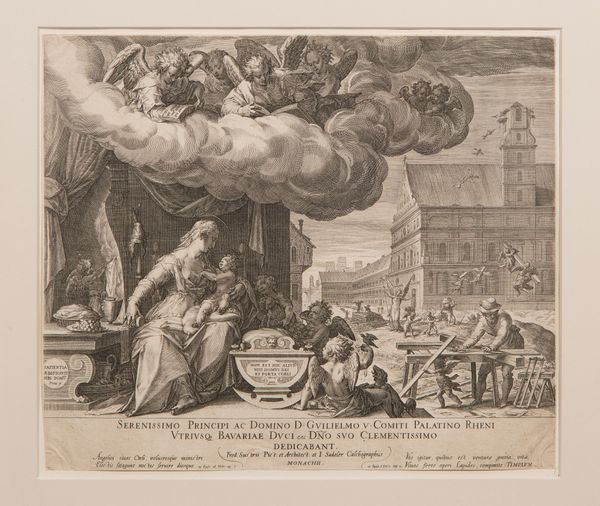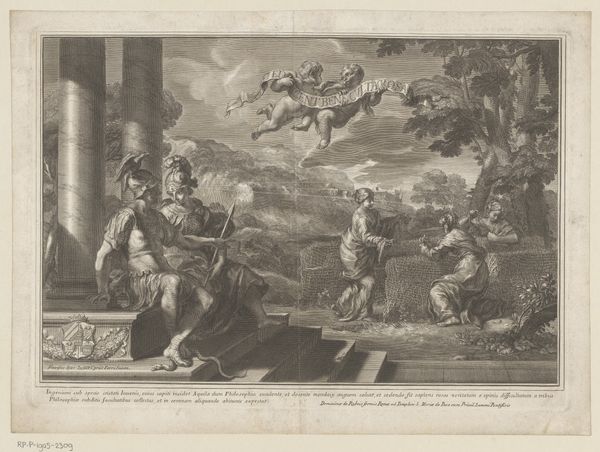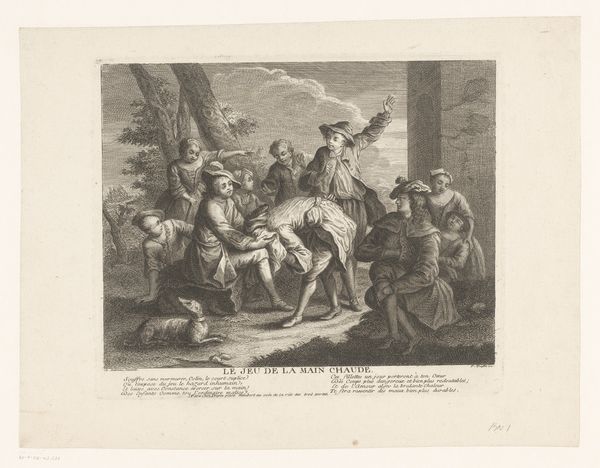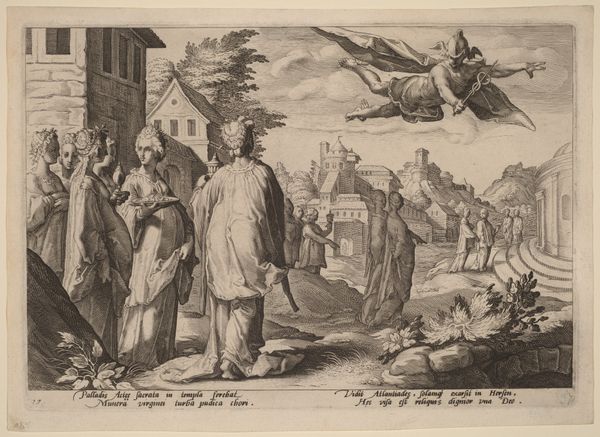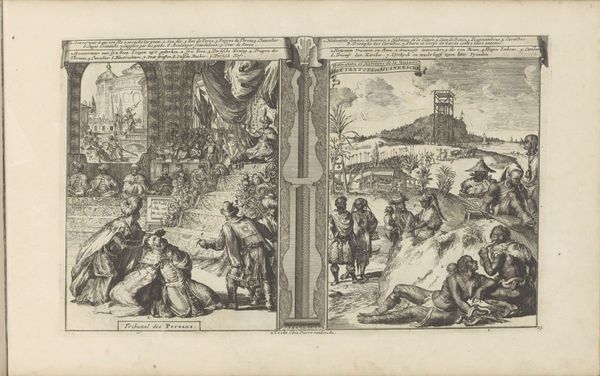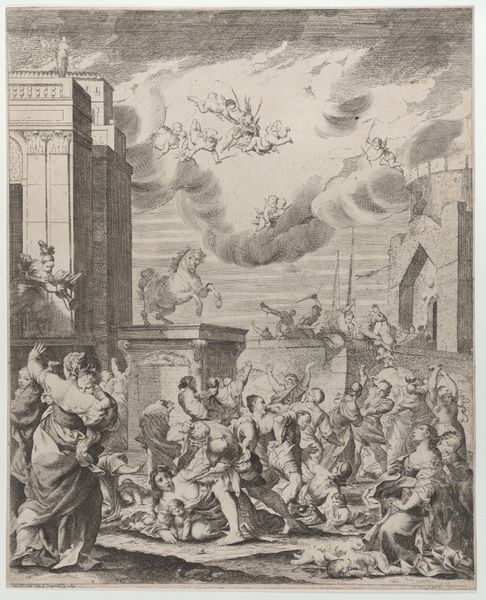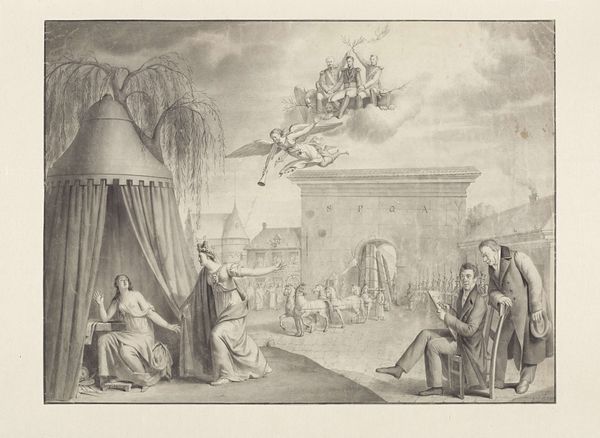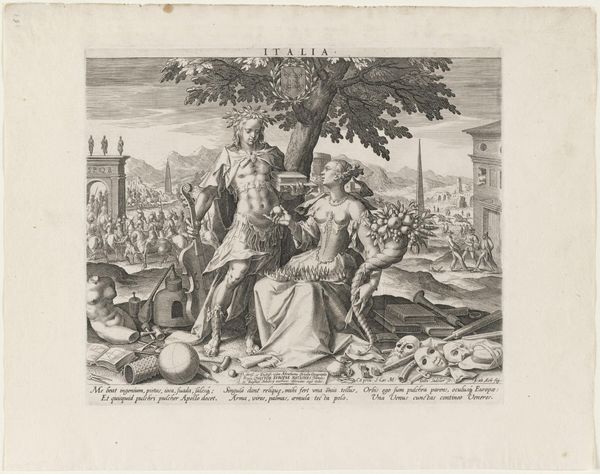
Verheerlijking van Cornelis de Witt met op de achtergrond de tocht naar Chatham, 1667 1753 - 1782
0:00
0:00
Dimensions: height 186 mm, width 252 mm
Copyright: Rijks Museum: Open Domain
Simon Fokke made this engraving, *Verheerlijking van Cornelis de Witt met op de achtergrond de tocht naar Chatham, 1667*, sometime in the 18th century. Engraving is an intaglio process, where a design is incised into a metal plate, and then printed. The lines you see here were all physically cut into the surface. Look closely, and you’ll notice that there is a tremendous range of marks. This wasn’t just a mechanical process. In the 1700s, engravers were in high demand. They were the ones who translated paintings, historical events, and even scientific diagrams into reproducible images. Each line speaks to Fokke’s skill, but also to his labor; the more marks, the more work. In this case, the fine lines are about much more than just the glorification of Cornelis de Witt. They speak to the rise of an image economy, and the skilled labor on which it depended.
Comments
No comments
Be the first to comment and join the conversation on the ultimate creative platform.
